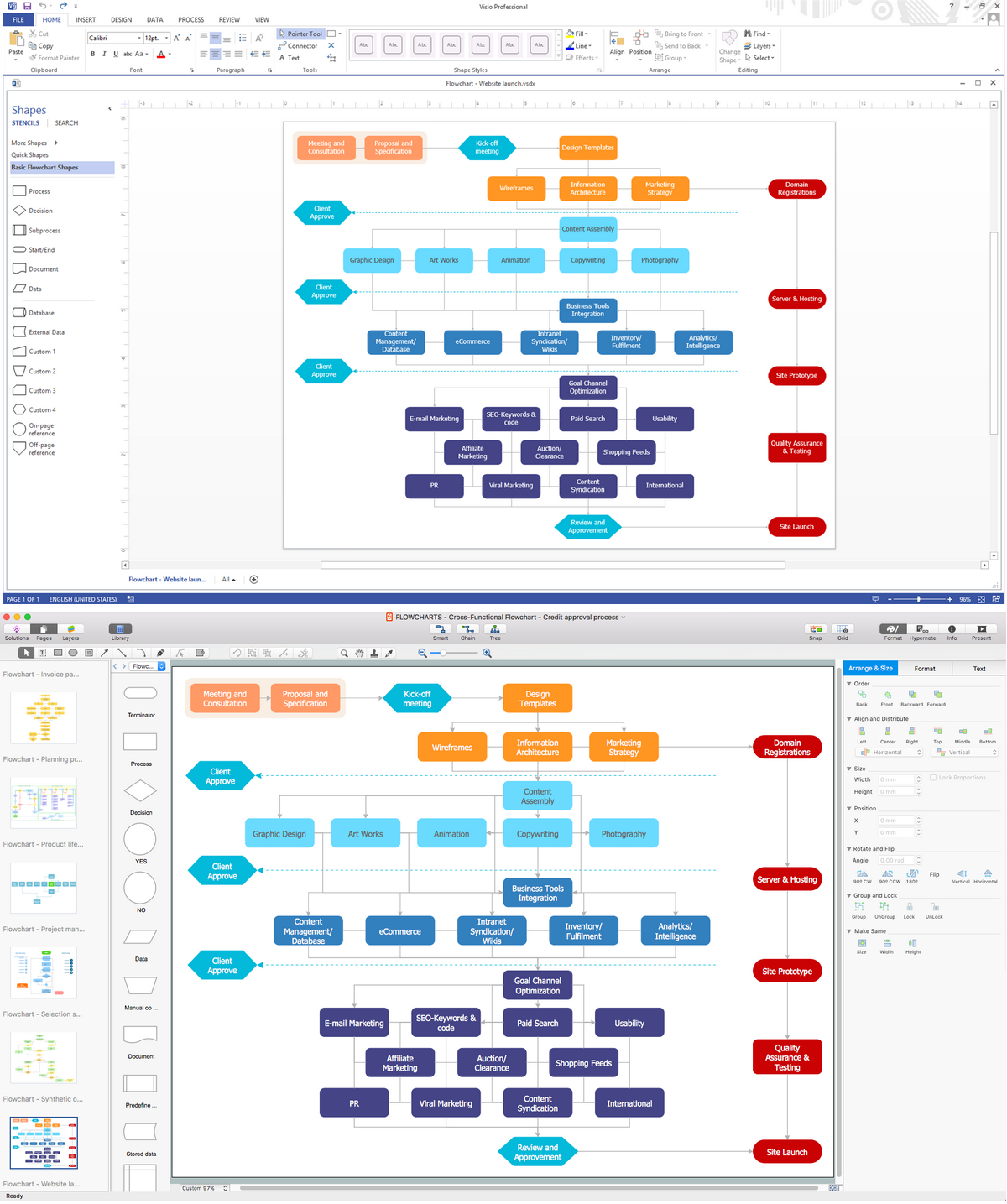Can Mac Users Download Visio
As an Office 365 admin, you can control which Office software your users can download and install from Office 365. The choices you make on the Office installation options page determine which software users can install from the My account > Apps & devices page in Office 365. Whichever choices you make, they apply to all users in your organization.
Edraw Max is a powerful and all-in-one diagramming solution for those looking for a Visio alternative on a Mac. VMware Stencils for Visio and OmniGraffle Visio for Windows. Download and extract the attached archive: vmwstencils.zip. Save the following Visio stencil files to C:UsersDocumentsMy Shapes.Microsoft Visio. Visio, only designed for Windows users, can’t be viewed straight from Mac. Even if you have downloaded an App to open Visio on your Mac already, you could not check it on another Mac.
Tip
To get to the Office installation options page, sign in to the Microsoft 365 admin center with your admin account, and then go to Show all > Settings > Org settings > Services.
If you choose to make some software unavailable to users, they see a message on their My account > Apps & devices page instead of an Install button. For example, if you choose to make Office unavailable, users see this message:
Your admin has turned off Office installs. Contact your admin for more information about how to get Office in your organization.
Choose how often to get feature updates for Office
For Microsoft 365 Apps, you must choose how often you want users to get feature updates. For example, users can get new features to Microsoft 365 Apps as soon as they're ready, or once a month (on the second Tuesday of the month), or twice a year (in January and July, on the second Tuesday).
If you want some users to get feature updates every month, but have other users get feature updates only every six months, you can manually download and install the Office apps for your users by using the Office Deployment Tool. This gives you the control to select different feature update settings for different groups of users.
For more information, Overview of update channels for Microsoft 365 Apps.
Manually download and install the Office apps by using the Office Deployment Tool
If you don't want your users to install software themselves from Office 365, you can download the software to your local network. Then, you can deploy the software to your users by using your existing software deployment tools and processes.
To manually deploy Office, as well as Project or Visio, you need to use the Office Deployment Tool. You can download the Office Deployment Tool for free from the Microsoft Download Center.
You use the Office Deployment Tool to both download and deploy Office, such as Microsoft 365 Apps, to your users. If you already use other tools, such as Microsoft Endpoint Configuration Manager, to deploy software to your users, you can use the Office Deployment Tool along with those tools to deploy Office.
For more information, see Overview of the Office Deployment Tool.
Manually download InfoPath 2013 and SharePoint Designer 2013
In addition to Office, you can download InfoPath 2013 and SharePoint Designer 2013 in order to deploy them to your users. You can download them from the Microsoft Download Center by using the following links:
InfoPath 2013 (32-bit and 64-bit versions)
SharePoint Designer 2013 (32-bit and 64-bit versions)
After you download the software, you can use your existing software deployment tools and processes to deploy InfoPath or SharePoint Designer to your users.
Additional considerations about managing Office installation options
The list of Office software that appears on the Office installation options page depends on the type of Office 365 (or Microsoft 365) plan that your organization has.
Users have to be local administrators on their computers to install Office software. If users aren't local administrators, you'll have to install Office for them.
For users to be able to install Office, you need to assign them a license.
By default, Office installs all the apps that are included in your version of Office on the user's computer. If you want some users to get fewer apps, such as only Word and PowerPoint, you need to use the Office Deployment Tool to deploy Office to your users without those apps.
Mac users aren’t at all shy about making their requests for applications known:
How about Visio for Mac?
When will IE return to Mac?
Will we ever see a Microsoft Project for Mac?
Where can I get Access for Mac?
When will (insert name of hot new game here) be available for Mac?
Most of these requests are for well-known Microsoft applications on Windows, and Mac users want them. Let me address a few of these in some detail.
Microsoft Visio

It’s unwise to say “never” with regard to future development efforts by a company as large as Microsoft, so I will predict this about Visio for Mac: it’s very, very unlikely to ever happen.
I, and many others, believe the development costs to produce a Mac Visio that would faithfully render any existing Visio drawing (and have almost all the functionality of Visio for Windows) would never be recouped by Microsoft.
For any Mac software company, a software product that brought in $50 million per year would be viewed as a fantastic success. But in the rarified world of the Microsoft Office team, such a product would be considered a dismal failure.

For any Mac software company, a software product that brought in $50 million per year would be viewed as a fantastic success. But in the rarified world of the Microsoft Office team, such a product would be considered a dismal failure.
Microsoft Access
Exactly the same as Visio: very, very unlikely to ever happen, and for exactly the same reason.
Internet Explorer
Never going to happen.
There was a version of IE for Mac about 15 years ago. Microsoft ceased development of IE for Mac in July 2003. Given that there is no new development for IE for Windows (because of the release of Microsoft Edge in 2015), there is no chance at all for a future release of IE for Mac.
Any Hot New Game by Microsoft
How To Download Visio On Mac
Never going to happen.
The graphics foundations on Mac and Windows diverge sufficiently that porting any hot new Windows game over to the Mac is a major undertaking. It would be unlikely to recoup development costs, for the same reasons as the Office applications. You can read more details about DirectX and OpenGL.
What’s a Mac User to Do?
There are a couple of options for a Mac user:
- Use a viewer application. In some cases, a viewer application that faithfully renders a document that you could not otherwise open will suffice. In the case of Visio, Microsoft has released a Visio Viewer for iOS, as shown in Figure 1.
- Use a competing application. Search for “Visio for Mac” on Google, and many of the results will be for third-party applications for Mac that open Visio drawings and provide much of the same functionality.
- Run the real Windows application on your Mac. If you need the real Visio with all its functionality, then use Parallels Desktop® for Mac to run Windows 10 on your Mac and purchase Visio from Microsoft. You lose no functionality or visual fidelity, since you are running the real Visio in the environment it expects: Windows 10.
Can Mac Users Download Visio Windows 10
(Already own Visio? No problem. Just use the Migration feature in Parallels Desktop to move everything on your PC—including Visio—into a virtual machine on your Mac.)
Visio For Mac Free
Figure 2 shows Visio running on my MacBook Pro®.
Figure 2_Visio 2016 running in Windows10 on a Mac with Parallels Desktop
Figures 3 and 4 show Access, and Figure 5 shows IE—all running on my MacBook Pro.
Figure 3_Access 2016 in Windows 10 running on a Mac with Parallels Desktop
Figure 4_Access 2016 in Windows 10 running on a Mac with Parallels Desktop
Figure 5_IE in Windows10 running on a Mac with Parallels Desktop
While you may not be able to get the Mac applications you desire, you can get the Windows versions and run them right alongside your Mac applications.
As the product manager for Parallels Desktop, you might consider my opinions to be a bit biased. (They aren’t, but you might think that.) So, here is a quote from a Network World review (emphasis mine):

“I’ve been a Mac user for many years, and like with most Mac users, there are occasions when I have core business apps that require me to run Internet Explorer for a browser, or run Visual Studio for app development work, or even run Microsoft Project and Visio that just aren’t available on a Mac. And while Apple provides BootCamp where I can switch between booting from a Mac to booting as a Windows system, that means I have to constantly reboot my system to switch between operating platforms. So I’ve been a happy user of Parallels for years where I can run Windows and Mac applications side by side at the same time.” –Rand Morimoto, Network World
Try Parallels Desktop for free for 14 days!
